
Section 3(2)(b) Consumer Protection Act 2019 Imbalanced Experience Requirements for Non-Judicial Members
Introduction
Multiple appeals that were filed in response to challenges to the Consumer Protection (Qualification for appointment, method of recruitment, procedure of appointment, term of office, resignation and removal of President and Members of State Commission and District Commission) Rules, 2020 were examined by the Supreme Court of India in a landmark judgment that was handed down on May 21, 2025.
The result established the principles of equality outlined in Article 14 of the Constitution as well as the theory of separation of powers, which were strengthened as a result of the reshaping of the selection process for judges and experts to serve on consumer dispute resolution organizations.
For any queries or to publish an article or post or advertisement on our platform, do call at +91 6377460764 or email us at contact@legalmaestros.com.
A Concise Summary of the Situation
Under the 2020 Rules, the state governments of Maharashtra and Telangana have issued notifications seeking applications to fill posts of Presidents and Members of State and District Consumer Commissions.
These notifications were published in order to fill positions. There were a number of individuals who submitted writ petitions to the Bombay and Telangana High Courts. These individuals included both judicial personnel and non-judicial professionals.
For any queries or to publish an article or post or advertisement on our platform, do call at +91 6377460764 or email us at contact@legalmaestros.com.
They contested the eligibility requirements, tenure conditions, as well as the makeup of the Selection Committees and the powers that they were granted in accordance with the 2020 Rules.
While the Bombay High Court overturned crucial regulations on the grounds that they were arbitrary and violated the constitution, the Telangana High Court overturned some appointments on the grounds that they were in violation of prior directives issued by the Supreme Court in the case of Limaye I (2023). Following the issuance of these contradictory rulings, the Supreme Court was presented with about twenty appeals and review requests.
For More Updates & Regular Notes Join Our Whats App Group (https://chat.whatsapp.com/DkucckgAEJbCtXwXr2yIt0) and Telegram Group ( https://t.me/legalmaestroeducators )
For any queries or to publish an article or post or advertisement on our platform, do call at +91 6377460764 or email us at contact@legalmaestros.com.
Important Provisions That Are Being Challenged
The Supreme Court of the United States thoroughly examined four primary aspects of the 2020 Rules. The criteria that were judged to be unreasonable were Rule 3(2)(b) and Rule 4(2)(c), which required non-judicial members to have twenty years of professional experience and fifteen years of professional experience, respectively.
This was in contrast to the requirement that judicial members have just 10 years of experience as a presiding officer or High Court judge. A three-person Selection Committee was established by Rule 6(1).
This committee had one judicial nominee and two executive officials at the helm. This committee was granted unrestricted discretion from Rule 6(9), which allowed it to establish its own method for selection. This was in contrast to the model rules, which required written exams and viva voce. Under Rule 10(2), the maximum length of service was reduced from five years to four years, which was the prior law.
For any queries or to publish an article or post or advertisement on our platform, do call at +91 6377460764 or email us at contact@legalmaestros.com.
The Doctrine of Equality and the Arbitrariness of Decisions
It was underlined by the Court that actions taken by the state shall not breach the equality guarantee that is mentioned in Article 14.
It was determined that the imposition of exorbitant experience criteria on non-judicial members, while allowing judges to qualify with just ten years of employment, did not have any reasonable connection to the goal of ensuring qualified experts. The arbitrary stratification violated the basic principle of fairness, which led to the invalidation of Rules 3(2)(b) and 4(2)(c).
Judicial Dominance and the Determination of Separation of Powers
A fundamental element in the process of appointing members to the tribunal is that the Selection Committee must be dominated by judicial members in order to maintain integrity. This equilibrium was thrown off by Rule 6(1), which only allowed for one judicial candidate to be appointed in comparison to two executive members.
For any queries or to publish an article or post or advertisement on our platform, do call at +91 6377460764 or email us at contact@legalmaestros.com.
In order to underline that an executive majority in choosing adjudicators undermines public trust and intrudes into judicial realm, the Court referred to previous cases, such as Rojer Mathew v. South Indian Bank Ltd., as examples. A consequence of this was that Rule 6(1) was invalidated.
Role of Structured Selection Procedures in the Search Process
The decision emphasized the importance of written examinations and viva voce when it comes to ensuring openness and merit-based appointments. In accordance with Rule 6(9), the Selection Committee was granted unrestricted authority, which was incompatible with the requirement that processes be objective and model-rule based.
Consequently, this open-ended decision was rendered unconstitutional in order to protect against arbitrariness and to guarantee that other states adhere to the same norms.
For any queries or to publish an article or post or advertisement on our platform, do call at +91 6377460764 or email us at contact@legalmaestros.com.
The stability of the institution and the length of time in office
Using the case of Madras Bar Association v. Union of India as a precedent, the Supreme Court of India came to the conclusion that shorter tenures weaken the independence of a tribunal by reducing the desire of eligible individuals to serve.
It was reaffirmed that a minimum term of five years is required in order to achieve stability and accumulate expertise. Despite the fact that appointments that have already been made will be for a period of four years, the Court has mandated that any future regulations must reinstate a term of five years.
Considerations Regarding the Potential Application and Protection of Current Employees
The Court implemented its ruling prospectively since it was aware of the difficulty that it would cause to 112 applicants who had already been chosen according to the challenged guidelines.
For any queries or to publish an article or post or advertisement on our platform, do call at +91 6377460764 or email us at contact@legalmaestros.com.
In accordance with the current procedure, those who were serving as of October 5, 2023 were allowed to complete their full terms of four years, and they were able to reapply in accordance with the new regulations.
It was permitted for selectees whose contracts expired in the middle of the recruiting process to continue working until the new procedure was finished. For the purpose of protecting genuine expectations without disrupting the court’s larger reformatory intentions, this combination of equity and legality was used.
Instructions for the Upcoming Rules
For any queries or to publish an article or post or advertisement on our platform, do call at +91 6377460764 or email us at contact@legalmaestros.com.
While exercising the authority granted to it by Article 142, the Supreme Court gave thorough advice for new regulations. It was required that Selection Committees consist of two members from the judiciary, with one of them serving as the chairperson, and only one executive member who had voting rights.
It mandated that non-judicial positions be subjected to a clear written examination as well as viva voce examinations, while excluding judicial members from the testing process. It asked the Union Government to establish permanent, professional consumer courts in order to strengthen the institutional durability of the institution, and it demanded that tenures be set at five years.
According to the new structure, the states were given a period of four months to finish the recruiting process.
For any queries or to publish an article or post or advertisement on our platform, do call at +91 6377460764 or email us at contact@legalmaestros.com.
Solutions to the Most Important Problems
To a large extent, the ruling was concerned with the issue of ensuring that consumer justice authorities are staffed by individuals who are selected via procedures that are impartial, open to public scrutiny, and professionally rigorous.
The regulations that favored executive control in the selection process, enforced artificial qualification gaps, and limited tenures at the expense of knowledge were overturned as a result of this. Both the independence and credibility of consumer commissions were strengthened by the Supreme Court via the implementation of merit-based testing and the rebalancing of the balance between the executive branch and the lower courts.
For any queries or to publish an article or post or advertisement on our platform, do call at +91 6377460764 or email us at contact@legalmaestros.com.
The Finalization
This ruling represents a turning point in the administration of the tribunal. The constitutional provisions of equality and separation of powers are combined with safeguards for incumbents that are tailored to their specific circumstances.
Through the formulation of specific guidelines for new regulations, the Supreme Court has mapped out a distinct course that leads to consumer dispute resolution institutions that are resilient and free from political influence. The reaffirmation that procedural fairness and institutional independence are vital cornerstones of justice is the legacy that this decision will leave behind.
For any queries or to publish an article or post or advertisement on our platform, do call at +91 6377460764 or email us at contact@legalmaestros.com.

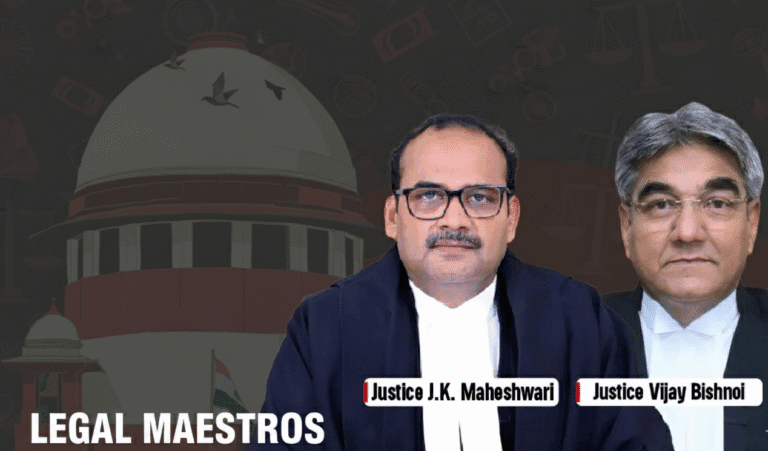
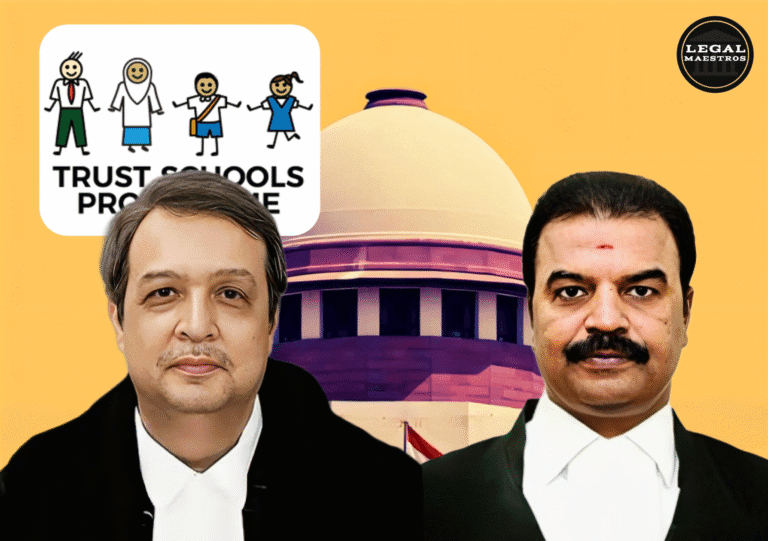
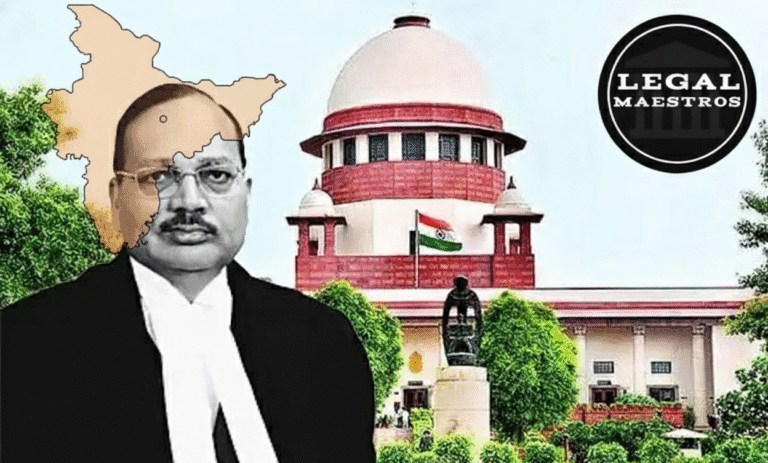
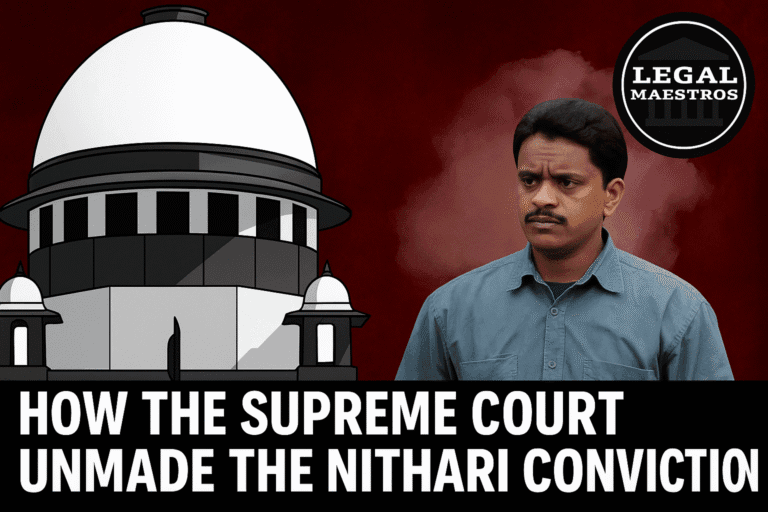
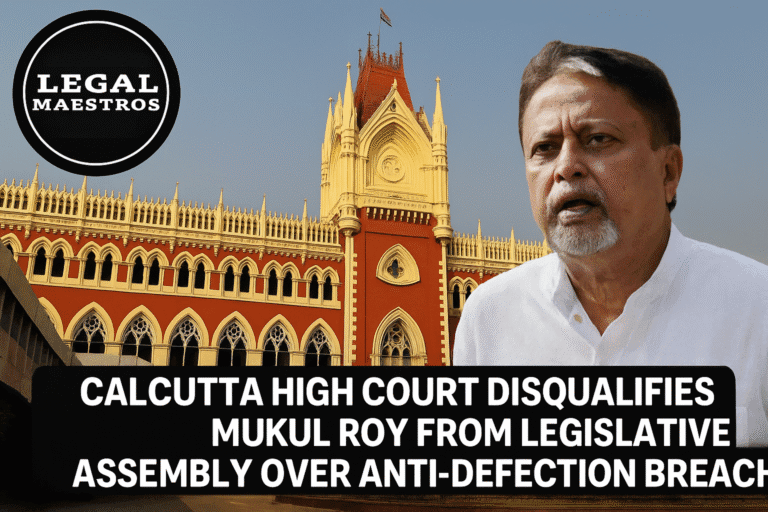
![Research Assistantship @ Sahibnoor Singh Sindhu, [Remote; Stipend of Rs. 7.5k; Dec 2025 & Jan 2026]: Apply by Nov 14, 2025!](https://legalmaestros.com/wp-content/uploads/2025/11/Gemini_Generated_Image_s0k4u6s0k4u6s0k4-768x707.png)
![Karanjawala & Co Hiring Freshers for Legal Counsel [Immediate Joining; Full Time Position in Delhi]: Apply Now!](https://legalmaestros.com/wp-content/uploads/2025/11/Gemini_Generated_Image_52f8mg52f8mg52f8-768x711.png)